Whether you’re a brand new or long-time reader of my blog, chances are, you’ve seen the “AIP Diet” somewhere during your internet browsing.
If you're munching on an AIP-compliant snack as you read this (might I suggest my chocolate dipped berry protein bars?), you might feel like you can skip this article. However, I invite you to stick around – you never know when you’ll learn something new that could take you healing to a whole other level.
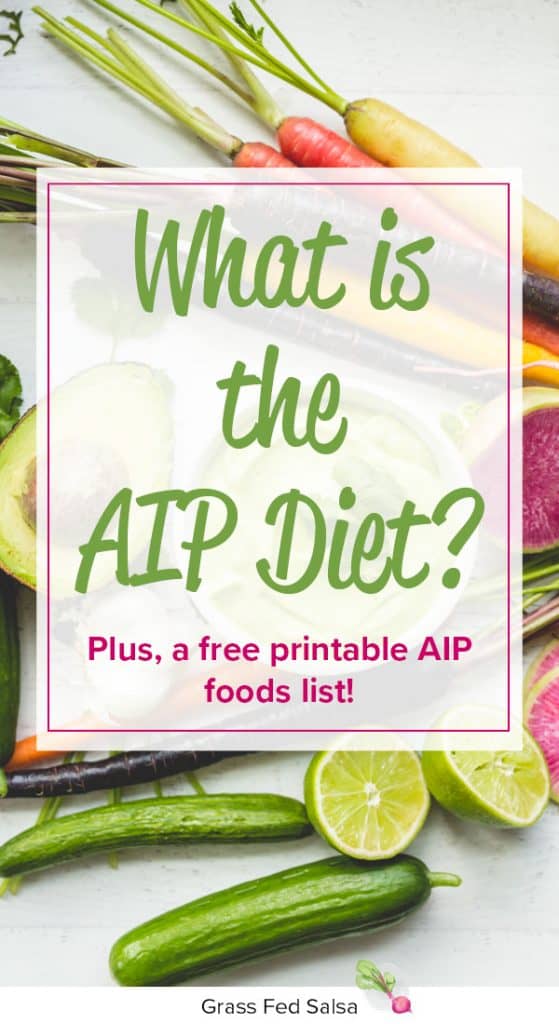
What is the AIP Diet?
The Autoimmune Protocol Diet, or the Autoimmune Paleo Diet is well-researched, nutrient-based elimination diet to help reduce inflammation. It was developed for those of us suffered by autoimmunity, a condition in which the body’s immune response attacks its own cells. However, it can benefit anyone with chronic inflammation.
When someone mentions the AIP diet, the first thing to come to mind is the list of off limits foods. This list includes common inflammatory foods like grains, dairy, and soy. It also includes some that are otherwise very healthy, like nuts and seeds, nightshades, and eggs.
The AIP diet also focuses on adding high-quality nutrient-rich foods like wild-caught coldwater fish (salmon, sardines, mackerel), leafy green vegetables, and high-quality fats like coconut oil, avocado oil, and even pasture raised lard.
The AIP Diet (aka autoimmune paleo diet) might sound like just another elimination diet, but it’s much more than that.
Beyond an enjoy/avoid foods list, the autoimmune paleo diet focuses on reducing the overall stress burden on your body. This includes:
- reducing toxic exposure,
- prioritizing good sleep,
- replacing high-intensity exercise with restorative movement,
- and spending time with people you love.
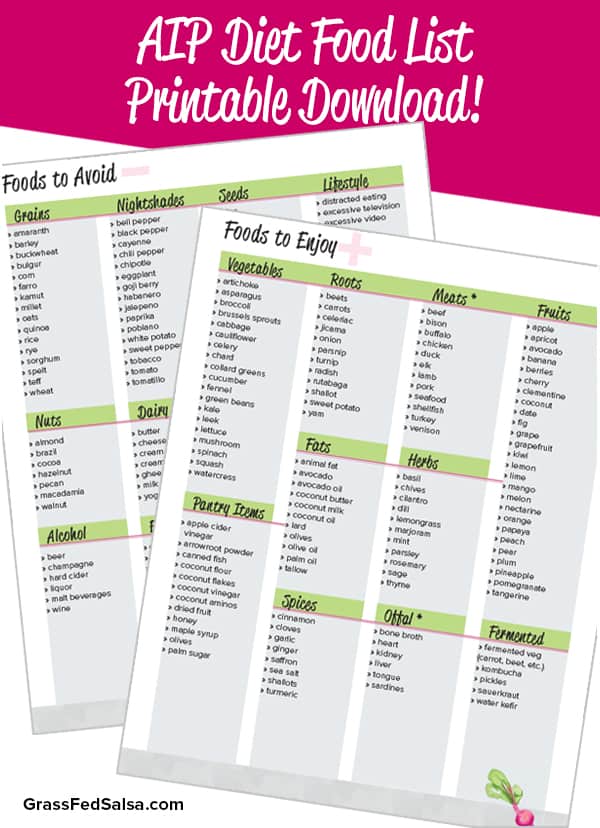
I’m already gluten-free, now are you telling me I have to give up eggs forever?!
No! Forever giving up your favorite foods is not the goal of the autoimmune paleo diet.
The AIP diet is done in phases. This helps to maximize healing, andmaximize the foods that you can bring back into your diet. You’ll remove the “avoid” foods from your diet for at least 30 days, or until you see a reduction in symptoms.
When you’ve been feeling better for a couple of weeks, you start using a phased approach to reintroductions. This phased approach starts by reintroducing the least inflammatory and most nutrient-rich foods. You’ll introduce one food at a time, tracking any flares or worsening of symptoms in the three days following reintroduction.
Click here to get the AIP Cilantro Avocado Mayo recipe pictured below.
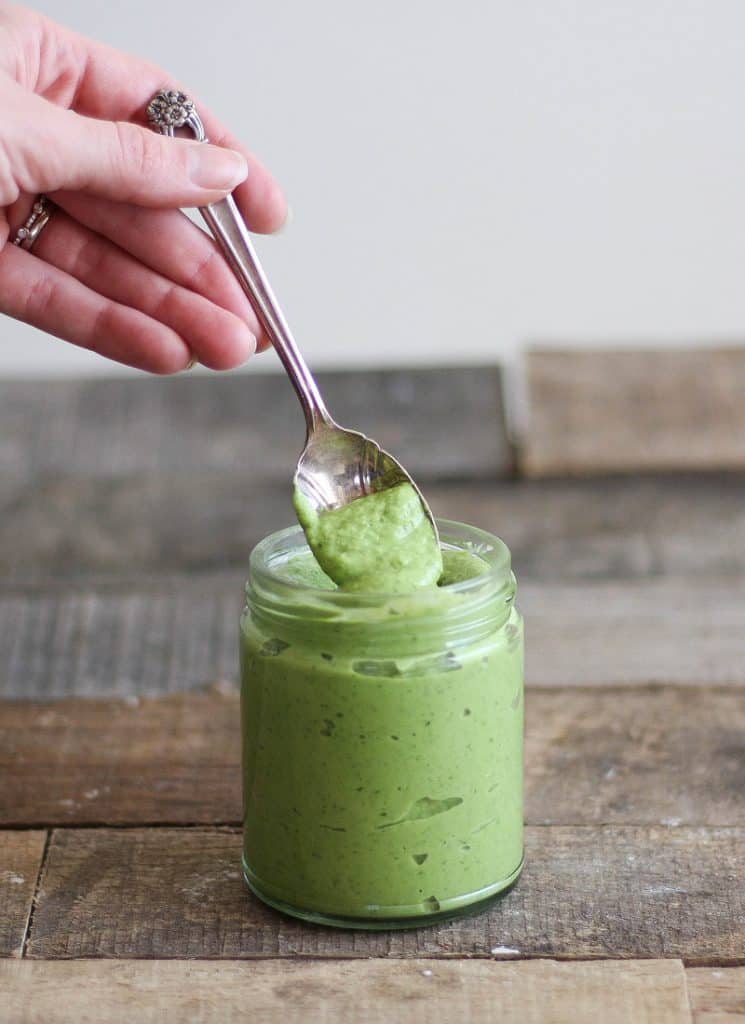
How do I know what non AIP diet foods are working for me?
Symptoms of a food sensitivity can be subtle, so be sure to journal throughout the elimination and reintroduction process. Track everything you're eating and write it all down. Then when you start reintroducing foods, you can review your journal to find patterns with your symptoms.
Look for obvious reactions like rashes, diarrhea, and headaches. You'll also want to keep an eye out for more subtle ones like brain fog, joint pain, anxiety, mood changes, or insomnia. Remember, these reactions can have a delayed onset of up to 72 hours.
How do I know if I should try the AIP diet?
If you suffer from an autoimmune condition (rheumatoid arthritis or lupus, to name just 2) , or a chronic inflammatory condition (eczema or high blood pressure) and feel unsatisfied with the improvements you have made with a more conventional approach, you might want to give the autoimmune paleo diet a try.
I understand that transitioning to a strict autoimmune protocol diet-compliant foods can be daunting. Even if you’re already eating a paleo-type diet, switching to the AIP diet can seem pretty daunting.
On that note, I can assure you that it’s perfectly okay to take it slowly and phase out non-AIP foods. In fact, this slower approach can help you stick to the protocol and see even more success!
If you choose to do a phased approach to the AIP diet, start by going gluten-free. Next, replace vegetable oils, like canola, safflower, and sunflower, with coconut oil and avocado oil. The next switch might be to swap your cows dairy with coconut milk. Then you can eliminate grains altogether, and so on.
I also highly encourage working with a practitioner who can support you throughout this journey. The AIP diet can be confusing. Especially since everyone has to make personal shifts to their lifestyle and diet to comply with the autoimmune protocol.
Click here to get the AIP Bacon Cheeseburger Nachos recipe pictured below.

How should I get started on the AIP diet?
There is a lot to learn about the AIP diet, so I created a few articles to help get you started. Below you can click to download a detailed list of the AIP diet foods you should avoid, and the ones you should enjoy.
Get the support you need to find success on the AIP diet…
My blog has tons of recipes and info to make the AIP diet easier and more tasty! But even with an entire internet full of AIP compliant recipes, it can still be hard to successfully stick to the diet and actually heal…
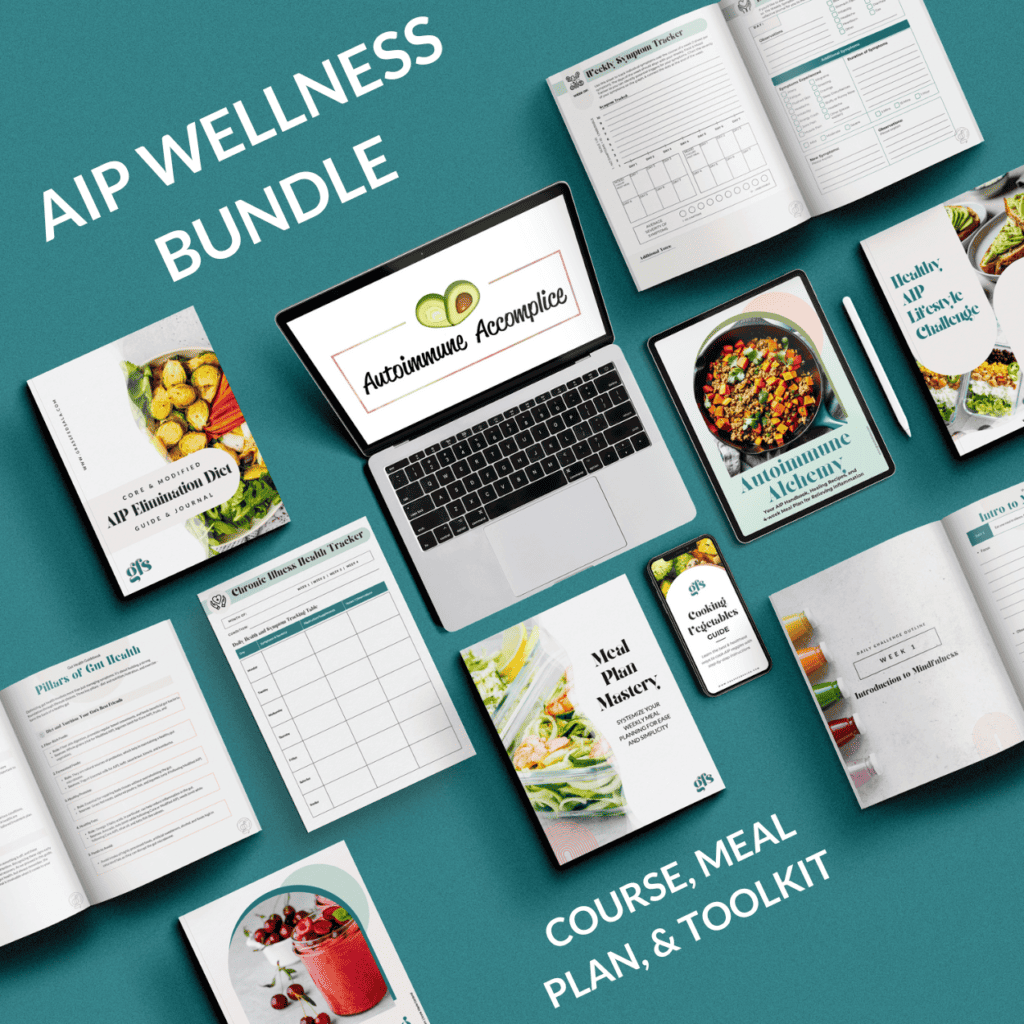
If you want to feel supported throughout the Autoimmune Protocol, you can find meal plans, trackers, guides, and courses to support you when you click here.
If you're wanting more info, check out the comprehensive resources awesome AIP pioneers at the Paleo Mom, and Mickey Trescott and Angie Alt from Autoimmune Wellness have put together.
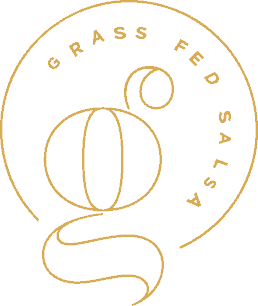
Hi Anne.
I just downloaded the free AIP Diet Food List, thank a bunch for that!
However, I was scratching my head a bit when I couldn’t find coffee listed among the things to avoid, as I was sure it should be on there somewhere. Finally, I chuckled a bit when I found it listed among the beans 🙂
Despite their name, coffee beans are actually the seeds of the coffee fruit. I’m not quite sure where it would be best to list coffee, but it seems to fit better under Seeds, Lifestyle, or maybe a new list titled beverages.
Also, I asume all alcoholic beverages are best avoided, not just those on the list?
All the best and thanks again,
Simon
I recently learned of the AIP diet, literally late last night while watching YouTube because I was so distraught over how my body is “breaking down.”I’m Vegan, have been for two and a half years. Im very interested in trying AIP. is it Vegan friendly?
Coffee- why is coffee off limits? I have been diagnosed with leaky gut, so want to try something to feel better. I don’t drink coffee for the caffeine, I just like the taste and the warm comfort. I have tried dozens of herbal teas. Just not the same. Thank you in advance.
Coffee was the hardest for me to give up, so I feel you. Here’s a great article for you to read so you can decide if this is something you’d like to try eliminating. https://www.thepaleomom.com/coffee-and-autoimmune-disease/
Hi Anne,
Your Berry Collagen Protein Bars recipe sounds really good, but I have a question: Where do you get your collagen peptides? Do you buy them in bulk? The collagen peptides that I have seen online at Amazon or Walmart are pretty pricy. I noticed that the recipe for the berry collagen protein bars requires 3/4 cup of collagen peptides. It is hard to compare to the quantities sold online (in varying quantities of grams, ounces, or “servings”, but it looks like what they are selling for somewhere between $20-30 is less than 2 cups. I would guess that the bars might cost $10-20 per batch when including the cost of the collagen peptides and coconut products and dried fruit. Is that true? Or have you found sources for the ingredients that are much cheaper than what I have found?
Trying to find a solution that works!
Thanks for any help and guidance you can provide.
Hi John!
I purchase my collagen peptides from Perfect Supplements. You can use the code GRASSFED10 for 10% off! I feel like I typically can make 3-4 batches of protein bars per tub of collagen and 100% think it’s worth it. Collagen was prevalent historically in the diet, and now it’s very scarce. I’ve never done a cost breakdown of the ingredients, but even if the batch of 8 protein bars is $20 (which I would think would be a high estimate), that would make each bar $2.50 which is in line for the cost of a protein bar made from similar quality ingredients (like an Epic bar made from grass fed protein). Hope that helps!
Here’s the link to the Perfect Supplements collagen I use. http://www.perfectsupplements.com/ProductDetails.asp?ProductCode=PS-COLLAGEN&Click=105610&a_bid=9c0630e5